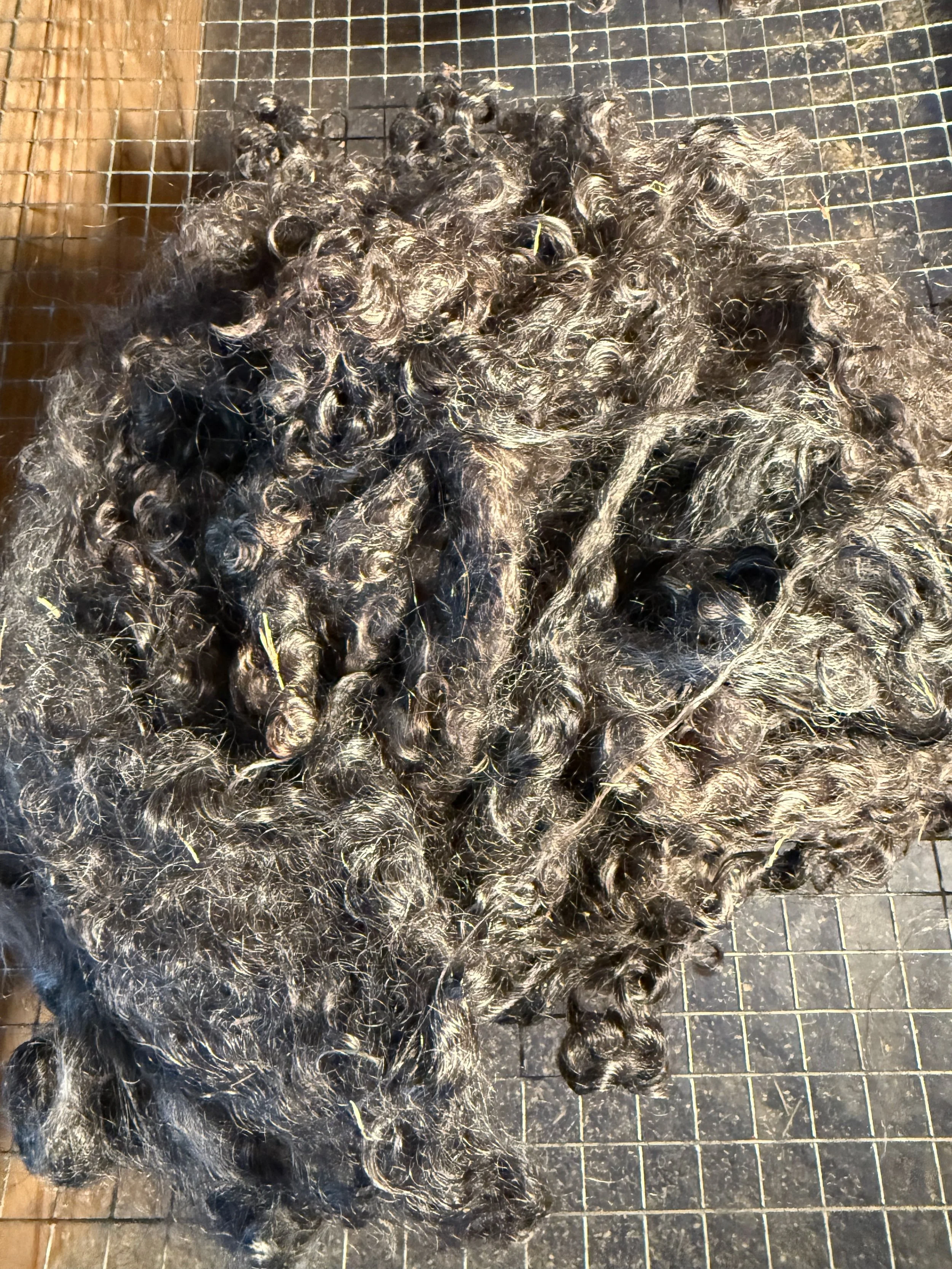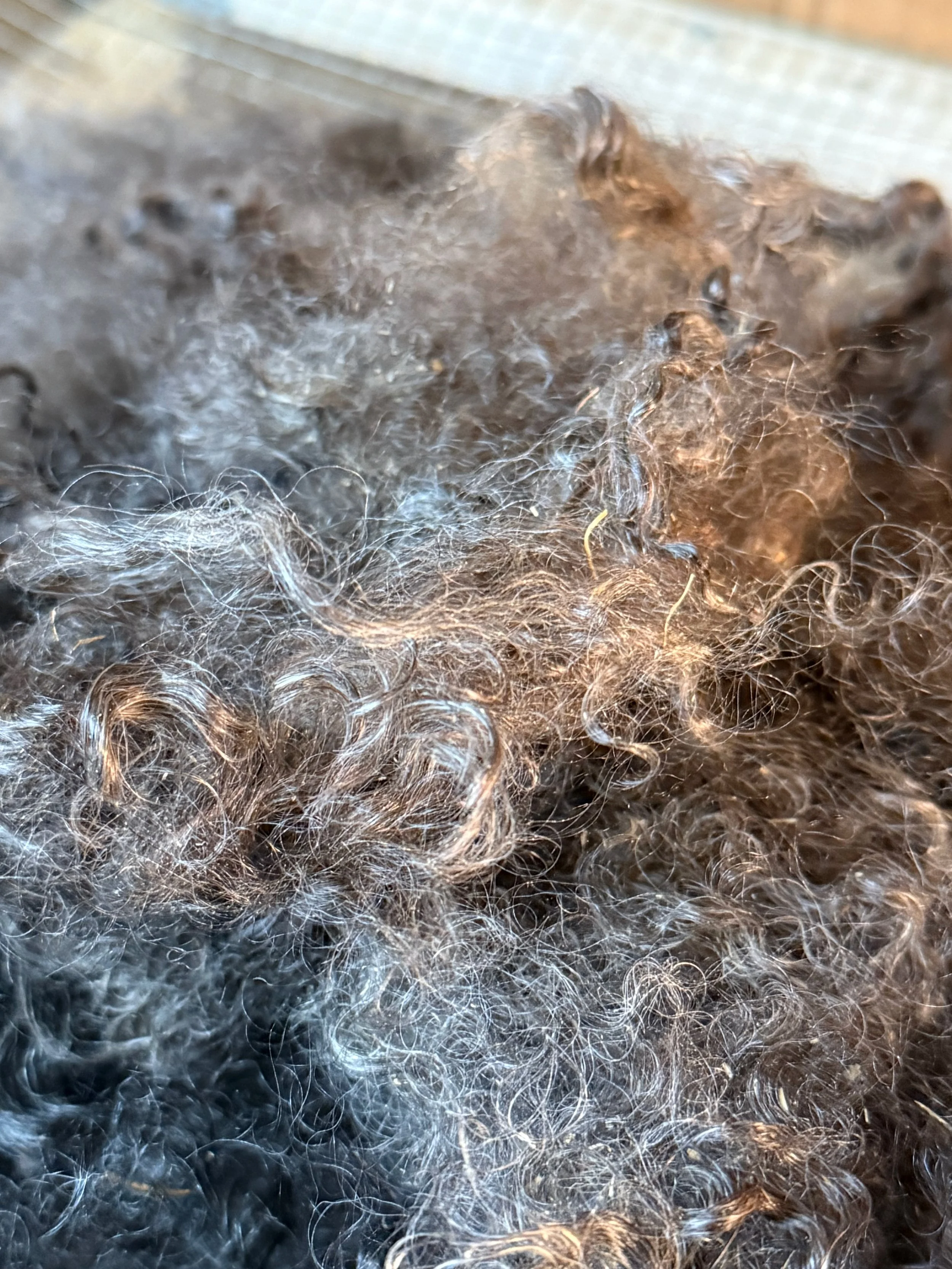On 20 September 2024, I did a blog post on removing vegetable matter in fleeces. I have made a change in how I process the mohair fleeces and will discuss what is now different. In the 20 September blog post, I described 5 main stages of removing vegetable matter (VM): (1) Skirting; (2) Washing; (3) Picking; (4) Carding; and (5) Spinning. Cleaning the mohair fleece, i.e. skirting and washing the fleece, is always done on the farm. If you send fiber to the mill, the picking, carding and spinning (if you get yarn, for roving you stop at picking and carding) are done there. My change, for mohair, is how I now do the skirting. So if you are really into either cleaning mohair - or understanding how it is cleaned - read on.
For mohair, my first step was, and still is, to put the mohair in a tumbler for about a half hour or so. This allows some of the second cuts and VM to fall out. The next step is skirting. Previously, this was a relatively quick process and I only removed the large pieces of VM and very stained fiber before moving on to the washing phase. Now I am very intensely picking the VM out of the fleece, and even more importantly, opening up the mohair locks if they are compressed. The reason for this is that the locks (particularly the tips of the locks) can be tightly bound together and trap in dirt and VM. After you have washed the fleece, it can look like the fleece is totally clean - see the picture below.
Washed Mohair Fleece - before opening any compressed locks
But then you can open up the compressed locks and find that small amounts of VM and dirt can fall out and, more significantly, the opened lock essentially can be unwashed and dirty. The picking and carding process also would open the lock and the small amounts of dirt and VM would fall out - but the only way to clean the fiber is by washing it. (And you normally would not wash the fiber once it was picked and carded.) The picture below shows some of the open locks (after the fleece was washed) and that some of the that fiber is still dirty.
Washed Mohair Fleece - after opening the compressed locks
And so I ended up washing the fleece again. This last picture shows the fleece after the second washing - nice and completely clean.
Mohair Fleece after the second wash - completely clean
Now, every mohair fleece does not necessarily have tightly. bound locks. And even if the locks are compressed, they do not necessarily have dirt and VM in them. But if they do, you can have the problem described above. And so, to avoid having to perform a second wash cycle, for all mohair fleeces during the skirting process, I now take the time to open up all locks that are tightly bound so any dirt and VM will fall out and, most importantly, all of the fleece will get thoroughly washed (without having to go through a second wash cycle).
The reader might wonder given all the years that I have been cleaning mohair fleeces, this change is only happening now. All I can say is that I followed the process we had learned from others (and via literature) and the initial skirting process had always been done quickly - with the focus solely on removing large pieces of VM. Also, most mohair fleeces do not have tightly bound locks with significant dirt and VM in them - so this problem was not common. In any case, to be safe and thorough, the skirting process has now been changed.



